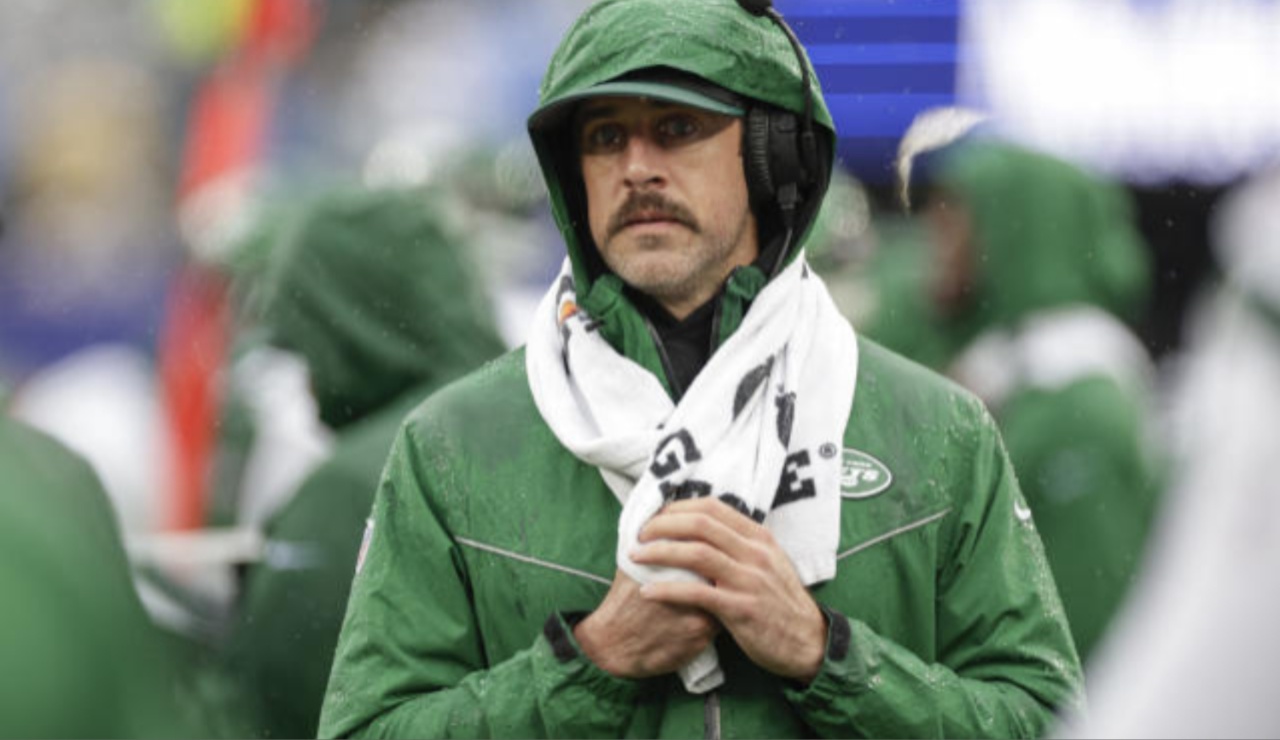If Aaron Rodgers has his way, he’ll be back on the practice field with the New York Jets in a mere two weeks, a remarkably short timeframe considering he underwent surgery on his left Achilles just three months ago.
During his regular appearance on “The Pat McAfee Show” on Tuesday, Rodgers expressed his desire to resume practicing around his 40th birthday on December 2. Although opening his 21-day practice window on a Saturday doesn’t seem feasible, December 6 is being considered as a potential date. This timeline would provide him with three weeks to prepare for the Jets’ December 24 game against the Washington Commanders, which serves as his unofficial target for a comeback.

Despite the Jets’ current record of 4-6 and a three-game losing streak, Rodgers remains steadfast in his belief that they are still in contention. Drawing parallels to the 2016 Green Bay Packers and the 2009 Jets, who both rallied from 4-6 to reach their respective conference championship games, Rodgers insists the Jets can make a similar turnaround.
While the team may be struggling, Rodgers is not slowing down in his rehabilitation efforts. He emphasized that the speed of his rehab has remained consistent, pushing himself every day. Jets coach Robert Saleh affirmed that Rodgers has the green light to play once he receives medical clearance, making any speculation about his return premature.
Rodgers, currently 10 weeks post-surgery, revealed that he’s actively jogging on an Alter G treadmill and even shared a video of his progress with Jets’ personnel. Despite the advanced stage of his recovery, he acknowledged the need to continue building strength in his heel and calf, areas prone to fatigue.
The quarterback, operating out of his rehab facility in the Los Angeles area, anticipates rejoining the team later in the week. As the Jets gear up to face the first-place Miami Dolphins in the NFL’s inaugural Black Friday game at MetLife Stadium, Rodgers reflected on the recent decision to bench Zach Wilson in favor of Tim Boyle. He expressed empathy for Wilson, rejecting the idea of him being a scapegoat and highlighting the collective responsibility for the team’s struggles.
In a candid admission, Rodgers expressed personal guilt for his injury, which occurred on the fourth play of the season, subsequently thrusting Wilson into the lineup. He conveyed frustration at not being able to contribute to the field and the belief that his presence could have altered the narrative around the team. Despite the setbacks, Rodgers remains optimistic about Wilson’s future in the league.
